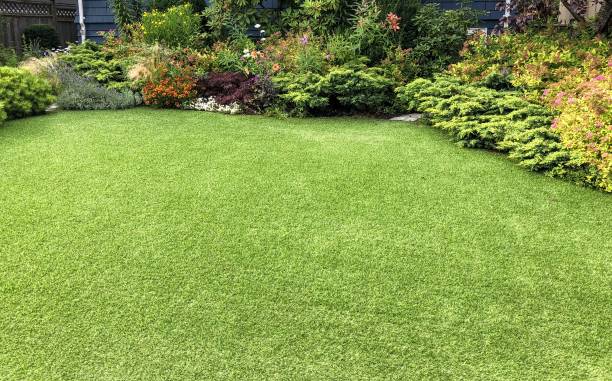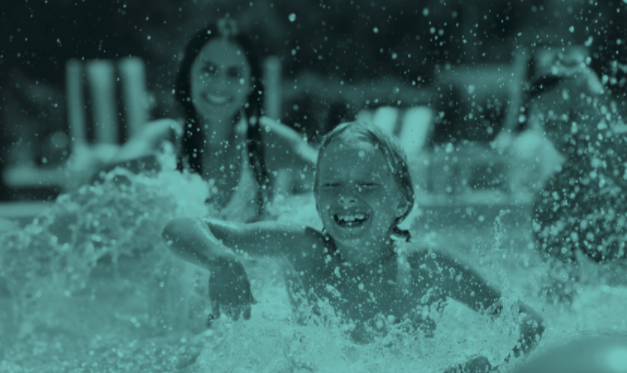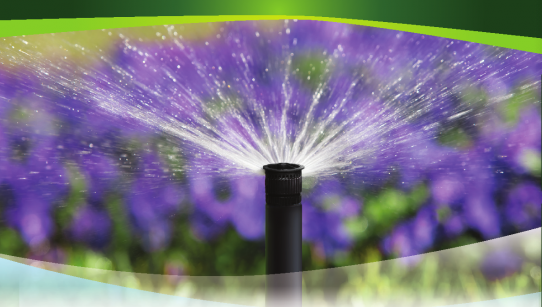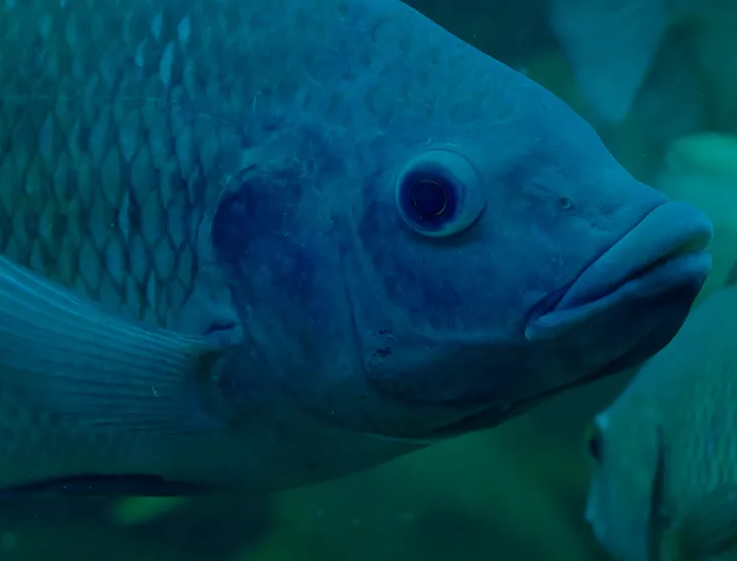Managing Temperatures On Natural and Artificial Turfs Using Irrigation
A blog on artificial and natural turfs.
Artificial Turfs (AT) resemble natural grass in appearance but are composed of synthetic materials. Polypropylene or polyethylene are commonly used in synthetic grass fibers and yarn. It was once only seen on sports fields, but it is now often found on home lawns and in commercial applications.

Artificial turf has several advantages over natural turf, including the fact that it requires less maintenance and looks nice in all seasons. Since they do not require the use of gas or electrically driven lawn equipment for maintenance they are also better for the environment. Cleaning up an artificial turf is simpler compared to a natural turf, since its easy to pick up solid waste from it.
Furthermore, artificial turf does not require any weed killers, fertilizers, or pesticides to survive, making it completely safe for children. Meanwhile, natural turfs require monthly maintenance for mowing, fertilizers, sod and water and this elevates the maintenance cost.
How is the surface temperature of natural and artificial turfs?
Artificial Turfs (AT) have a much greater surface temperature than the air or soil temperature. The amount of radiation emitted by the sun has a bigger impact on AT surface temperature more than it has on the air temperature. Artificial turf has a heat-absorbing property, and when exposed to excessive heat, it generates a rubbery odour.
Heat is generated as artificial turf absorbs solar radiation and emits infrared radiation. The amount of heat produced varies depending on the colours. Dark colours absorb more radiation, resulting in higher heat build-up. Therefore, surface temperatures rise in large margins compared to natural turf. The level of moisture appears to be inversely related to surface and soil temperatures. It is likely that water vapor absorbs sunlight's energy.
Natural turfs have the lowest surface and subsurface temperatures among the surfaces measured. Compared to other surfaces, the air temperature over natural turf during the afternoon is lower on natural turf.
Overheating is the primary health concern associated with synthetic turf systems. Over exposure of synthetic turfs to infrared radiations (from sun) results in temperatures much higher when compared to turf grass. This could rise up as high as 35 to 60°C. Recent reports have shown that synthetic turf surfaces sometimes reach temperatures of 93°C.
Synthetic turf surfaces transfer enough heat to the inner soles of athlete’s shoes to cause physiological stress that can cause illnesses related to heat.
Why does artificial turfs needs to be watered?
After careful analysis on why manufactured turf surface temperatures are so high, experts have suggested diverse approaches to manage them.
Water systems applied to artificial turf can bring down surface temperatures to the levels observed on natural turfs. Dissipation of around 1.2 L/m2 of water can cool the outer layer of artificial turf to a natural turf grass-like level.
Even though water systems have been found to diminish the surface temperatures of manufactured turf frameworks, the cooling impact of water systems is not sustainable for long durations. The surface of the turf dries up quickly,
Because of this, five minutes after the watering the temperature expanded to 49°, and afterward rose to 73°C following 20 minutes. The application of tarps on the surface and the addition of infill amendments have been explored for maximizing and prolonging the cooling effect of irrigation on synthetic turf.
Consistency of the irrigation might possibly influence the irrigation system's cooling capability in the case of synthetic turf surface. While hand-held techniques work for irrigating the turf, it can be hard to gauge the precipitation rate over the entire area. Given the significance of water systems in maintaining turf temperatures, a programmed watering system could give the level of precision needed to guarantee uniform watering over the entire surface.
Cooling artificial turfs at temperatures similar to irrigated natural turfs comparable?
To study the differences between cooling artificial and natural turfs, an analysis was conducted between August 2017 and June 2018 on the Presley Askew baseball field at New Mexico State University in Las Cruces, New Mexico. The normal temperature and monthly precipitation during the period was collected at a climate station close to the field. In 2018, there were 21 days in June and 16 days in July with temperatures above 35°C.
An area of Presley Askew baseball field was changed over to an AT field for this study. The surface was made out of monofilament polyethylene mix strands tufted into a polypropylene backing. The infill was made out of a base layer of silica sand, a layer of a combination of sand and dark cryogenic elastic, and a 12.7-mm layer of fibre expelling over the infill. The strands are intended to imitate pieces of turf, while the infill goes about as a pad. The exploration region was 12.2 x 12.2 m and was set up in the focal point of the baseball infield to stay away from edge impacts as shown in Fig. 1.
(Fig. 1)
A transitory water system framework made out of four pop up sprinkler heads was placed at the edges of the space. Sprinkler heads were working at 276 kPa and had spouts of size 3.5. The water systems were reviewed twice before the trial to guarantee consistency in irrigation. The exploratory region was watered for 20 min two times every day at different occasions. The watering duration was picked after fundamental tests showed watering for 20 mins cooled the outer layer of the artificial turf to a temperature of 35°C, similar to that of a natural turf.
Two thermocouples were introduced at the outer layer of the artificial turf at a height of 100 cm. The two thermocouples were covered with radiation safeguards to prevent direct daylight from arriving at the sensors. The air temperature inside the safeguard however can in any case be considered equivalent to the encompassing outside air. The temperatures were recorded every 30 minutes during the analysis.
A model to compute the measure of water needed to lessen the surface temperature of artificial turf to levels equivalent to natural turf (30°C – 35°C) was created. The goal was to check the model under field conditions and to decide the period of time AT can be kept cool.
Results Figs. 2 and 3 show the surface temperature of the artificial turf, the temperature 100 cm over the artificial turf, air temperature and sunlight based radiation. Highest surface temperatures recorded were 55°C on August 7, 63°C on August 8 and 9, 2017, 63°C on June 26, and 70°C on June 28, 2018. The blue rectangles correspond to the time interval of irrigation.
Figs. 2
Figs. 3
The temperature at 100 cm over the artificial turf followed a comparative example as the surface temperature and arrived at levels like the overall air temperature in August 2017. Greatest temperatures at 100 cm above AT were higher than air temperatures in 2018 and estimations went from 45°C on June 28 to 48°C on June 26.
Figs. 2 and 3 likewise show the adjustment of temperature at the outer layer of the AT after it was inundated double a day. For instance, the water system prompted a temperature change from 55°C to 36°C on August 7, 2017.
Twenty minutes of watering can bring down surface temperatures significantly for a brief period (from 20 to 70 min, depending on solar radiation intensity). From that point onward, the temperatures bounce back fairly yet the irrigated surface continues to be cooler than non-irrigated surfaces for around 3 h. This is because of the warmth limit of the infill keeping up with surface temperature while solar radiation diminishes.
The above case shows that the amount of water needed to keep up temperatures of the artificial turfs at levels practically identical to inundated natural turf over a 24h period surpass the water requirements of natural turf in a similar climate. Hence, an artificial turf is better for water preservation than a natural turf in dry environments. The quality of an artificial turf depends on the irrigation system, the playing conditions, and the time allotment water system will be utilized to keep up with the objective temperature during light hours.
The model indicates that over a 24-h period, the amount of water (3.00 to 5.00 mm) required to maintain artificial turf at temperatures similar to irrigated natural turf grass are comparable.












No comments yet